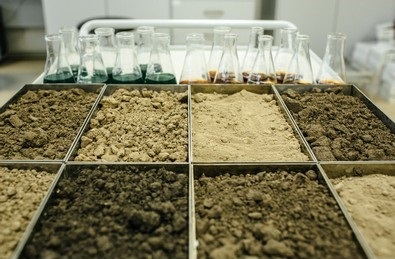Heavy metal contaminated (exceeded) soils are hazardous to human health with biologically effective heavy metal elements, so the use of total heavy metals to evaluate soil environmental quality is not comprehensive. Only by fully understanding the bio effectiveness of heavy metals can a more accurate evaluation of the environmental health risk and hazard level of heavy metals be made.

Morphological analysis of heavy metals is the basis of bio effectiveness, and bio effectiveness is a specific extension of morphological analysis in the research field. The factors influencing the bio effectiveness of trace elements include the total amount of heavy metals in the soil, the pH of the soil solution, the organic matter content of the soil, the clay content, other elements, chemical reagents, the time of contamination, agricultural activities, and plant species.
In most cases, the concentration of free state heavy metal ions is the key factor in determining the bio effectiveness and toxicity of heavy metals. The common methods used by Lifeasible to analyze the bio effectiveness of heavy metals in soil samples are chemical reagent extraction, DMT (donnan membrane technique), DGT (diffusive gradients in thin-films), isotope dilution method, etc.
This method is a method of extracting one or several chemical reagents by mixing them with soil in a certain ratio of the soil solution. This method extracts the easy-to-move dynamic heavy metal elements in the soil, which can be directly used by plants. Its advantages are simple operation and low cost.
DMT uses a cation exchange membrane to separate the feeder cell from the recipient cell. free state heavy metal ions in the feeder cell pass through the cation exchange membrane into the recipient cell and finally reach equilibrium. Lifeasible calculates the concentration of free state heavy metal ions in the feeder cell by measuring the concentration of heavy metal ions in the recipient cell. The main advantage of this method is that it can determine multiple heavy metals simultaneously with low interference to the system to be measured and has a wide range of applications.
The DGT consists of two main parts, the diffusive phase, and the binding phase. The substance to be measured passes through the diffusive phase and is accumulated in the binding phase, which determines the mass of reactants in the binding phase and thus calculates the concentration of heavy metal ions in the substance to be measured.
The DGT technique takes into account the dynamic process of depletion and depletion leading to soil resupply at the soil interface of plant roots and more accurately and realistically simulates the uptake and utilization of soil elements by plant roots and their dynamic changes.
Lifeasible uses this method to directly determine the exchangeable state content of elements in soil without disturbing the balance of ions between the multiphase components of the soil. It is highly accurate and sensitive in determining the exchangeable state content of heavy metals in contaminated soils. It is usually used when analyzing the bio effectiveness of heavy metals in soil/plant systems, as it provides more accurate and direct information than other methods.
Bioavailability is mainly emphasized as the nature of the toxic effect that the elemental metals can have on the organism or be absorbed by the organism, including toxicity and bioavailability, while bioavailability is a dynamic process. Therefore, Lifeasible uses a variety of methods to analyze the bioavailable state of metals in soil. You can always contact our staff to get answers to any questions you may have.
Lifeasible has established a one-stop service platform for plants. In addition to obtaining customized solutions for plant genetic engineering, customers can also conduct follow-up analysis and research on plants through our analysis platform. The analytical services we provide include but are not limited to the following:
Get Latest Lifeasible News and Updates Directly to Your Inbox
Adaptive Evolutionary Mechanism of Plants
February 28, 2025
Unraveling Cotton Development: Insights from Multi-Omics Studies
February 27, 2025